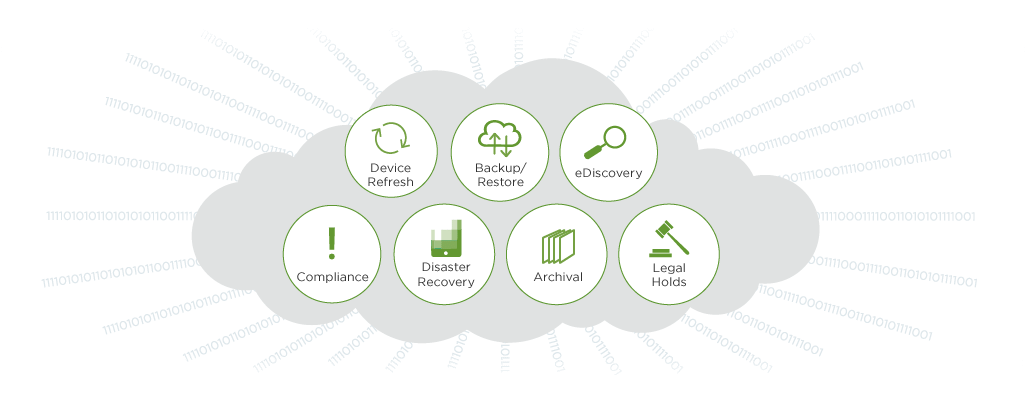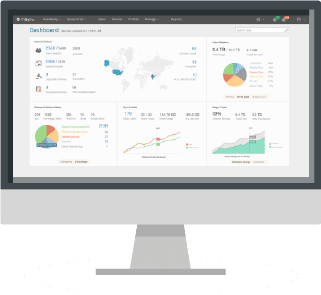Druva Delivers SaaS-Based Data Protection for Kubernetes
Druva is introducing a cloud-based SaaS solution to offer users simplified, enterprise-grade backup and disaster recovery support for Kubernetes. It also protects on-prem data centers and cloud workloads via a unified interface.

Druva is introducing a cloud-based SaaS solution to offer users simplified, enterprise-grade backup and disaster recovery support for Kubernetes.
The Druva Cloud Platform lets users quickly recover, migrate, or clone Kubernetes workloads, alongside existing data centers and cloud workloads from a unified interface, according to Druva’s chief technologist Stephen Manley.
Via its integrated dashboard, Druva enables organizations to manage the resiliency and governance of their global data footprint. This unified dashboard allows companies to maintain comprehensive data security, as well as comply with rapidly evolving global compliance and data privacy regulations, according to company execs.
"Businesses are expanding their use of containers and Kubernetes to stateful applications, but existing protection tools are siloed and do not meet enterprise protection requirements,” said Manley. “With Kubernetes usage on the rise, too many production workloads lack adequate data protection. Now, central teams can securely and seamlessly incorporate Kubernetes protection into their existing policies, while enabling application owners to recover, migrate, and clone applications when necessary.”
As application owners build and update their environment, Druva automatically and securely stores snapshots of the entire environment, so applications or operations teams can quickly and easily recover their applications.
Under the covers, Druva Cloud Platform provides SaaS-based data protection for Kubernetes, which includes these features:
- Comprehensive application protection, including resources inside and outside Kubernetes clusters
- Secure SaaS management, with a platform built on AWS for global control
- Centralized protection, management, and compliance with self-service recovery for DevOps and application owners
- Unified protection for Kubernetes, data center, cloud and device workloads
- Manage DevOps data with Kubernetes
Druva’s Data-Centric Architecture Smooths DevOps, Kubernetes Adoption
Data is the biggest challenge for DevOps pipelines, Manley noted, adding apps need data to do interesting work. Unfortunately, developers cannot “spin up” realistic datasets quickly and easily.
Druva is architected to overcome several crucial limitations:
Data generation tools: It takes too long to create a significant amount of data, and the result lacks complexity. The tests do not catch bugs caused by realistic data sets, and production ends up failing.
Use a storage clone of production data: Connecting to external sources of data can be complicated (network, security) and risky (data privacy, data leakage). Teams spend more time meeting and troubleshooting than in using the pipeline.
Use a copy data management product: Cost (another tool), complexity (network, security), and limited support (a handful of high-end databases) make it a niche option. This approach does not cover all of the data used by a modern application.
Analysts are also seeing the merit in the Druva approach, especially in the era of growing Kubernetes adoption.
“Now that Kubernetes has become the major container orchestration framework, IT and application development teams are embracing enterprise container platforms to help build new apps and modernize existing apps on distributed Kubernetes clusters,” said Phil Goodwin, Research Director, IDC. “In the race to adopt containers, unfortunately, protection often gets left behind. Druva aims to offer a singular solution that can fold Kubernetes protection to an existing data management system, offering a compelling option for businesses expanding their use of container workloads.”
A Look at Druva’s Architecture

Built on native public cloud infrastructure, the core of Druva’s platform is a scale-out secondary storage architecture for unstructured and structured information. It supports distinct metadata and data separation unlocks the value of data for multiple workflows by leveraging the same data blocks for parallel use cases.
Elements of the Druva SaaS architecture include these capabilities:
Metadata - Instant and efficient access and storage of data provides a foundation for global deduplication.
Data - Scalable, cost efficient object storage with multithreading maximizes IO.
Caching - Local object caching accelerates data access.
Auto-tiered Storage - Nearline and cold storage automatically optimize based on cost and SLAs.
Index Engine - On-demand data parsing readies data for compliance and audit queries.
Druva also aims to protect against many major threats, including hackers and ransomware attacks.
“Ransomware response never happens in a vacuum,” wrote Julie Herd, Druva’s director for solutions marketing, in a recent blog post.
“Druva understands that preventing, detecting and responding to ransomware requires an orchestrated effort across all the tools in your arsenal. That’s why we partner with industry experts in SIEM and SOAR to automate event management and ransomware response. We have two sessions dedicated to our partner solutions, including real-time demonstrations to show you how to deploy these solutions for yourself,” she added.






